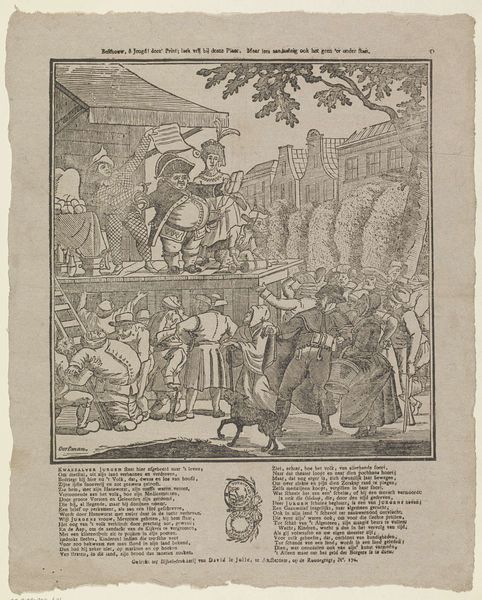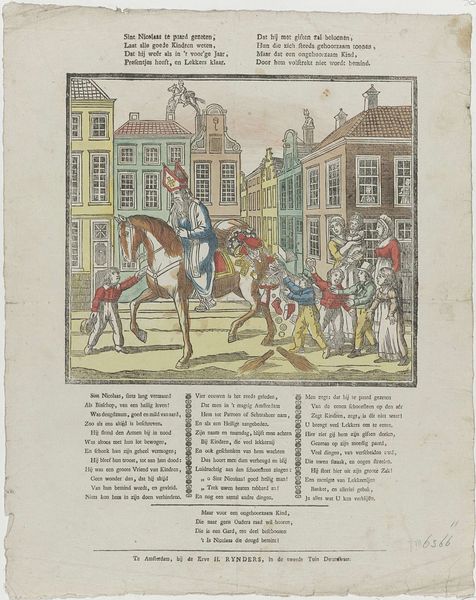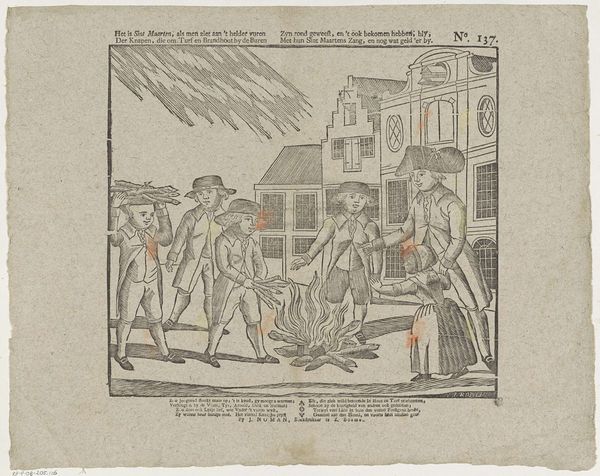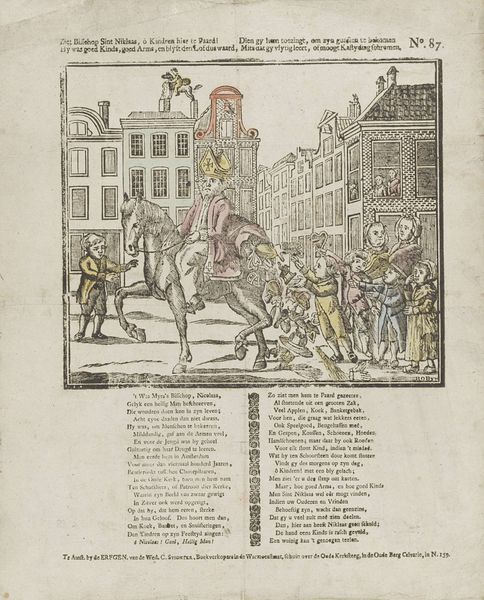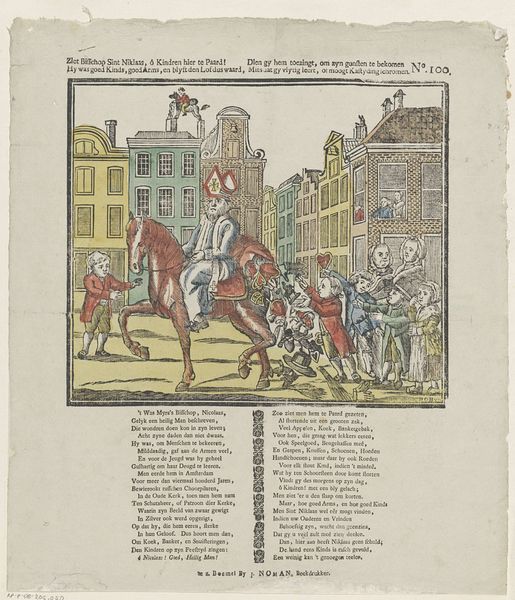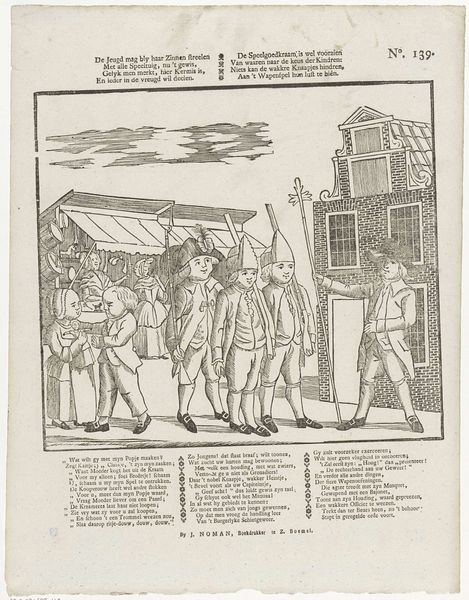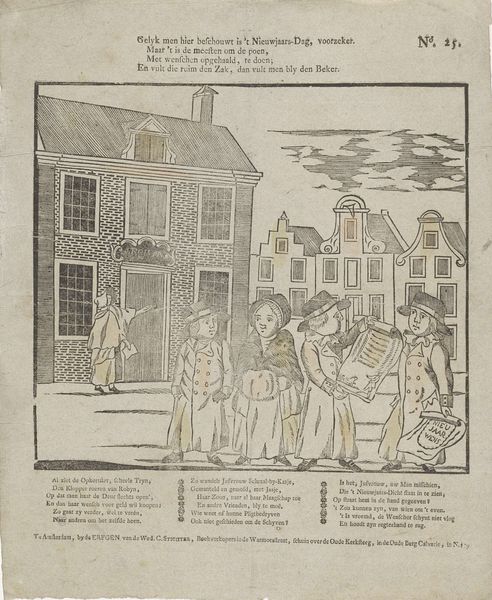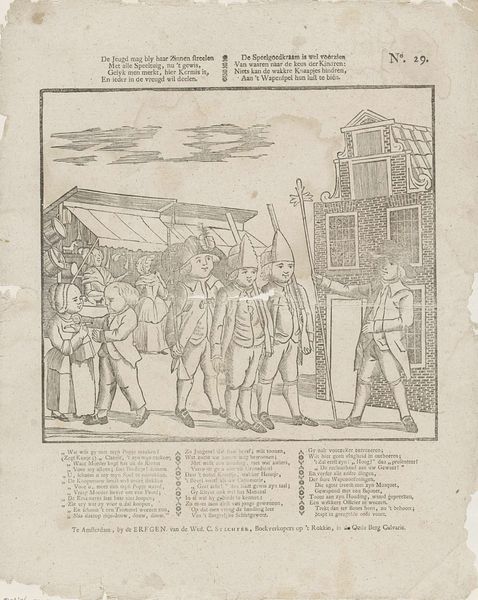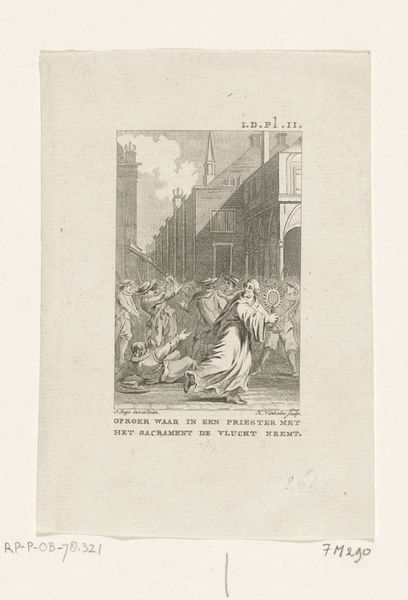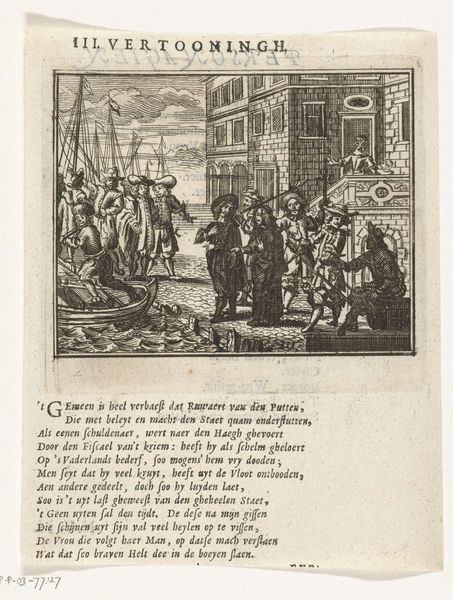
Ziet bisschop Sint Niklaas, ô kindren hier te paard! / Hy was goed kinds, goed arms, en blyft den lof dus waard, / Die gy hem toezingt, om zyn gunsten te bekomen / Mits dat gy vlytig leert, of moogt kastyding schromen 1806 - 1854
0:00
0:00
drawing, print, paper, engraving
#
drawing
#
narrative-art
# print
#
paper
#
folk-art
#
cityscape
#
genre-painting
#
engraving
Dimensions: height 395 mm, width 330 mm
Copyright: Rijks Museum: Open Domain
Editor: This is "Ziet bisschop Sint Niklaas, ô kindren hier te paard!" a print made between 1806 and 1854 by A. Robyn. The figures, though small, are really engaging. It seems like a festive scene. What can you tell us about its cultural context? Curator: Well, let's consider the subject matter. This print depicts Sinterklaas, the Dutch precursor to Santa Claus, arriving in a cityscape. The children are clearly excited, reaching out to him. Understanding the socio-political landscape of the Netherlands during the early 19th century helps us appreciate the print's purpose. It was a time when national identity and cultural traditions were being actively cultivated. Editor: So, this image served a purpose beyond simple decoration? Curator: Precisely. Consider its intended audience: likely families celebrating Sinterklaas. The text accompanying the image, though difficult to read completely, includes a poem about Saint Nicholas and instructions for children. How might such imagery shape a child's understanding of societal values and their place within it? Editor: I see your point. The print then becomes more than just a festive image; it’s a tool for socialization, reinforcing beliefs about charity, obedience, and even social hierarchy. Are those wealthy looking houses significant to the understanding of the politics of imagery? Curator: Yes, indeed! That is great that you noticed this. The contrast between the grand buildings and the children reminds of the inequality that defined Amsterdam, the printing location of this art work. Editor: This has definitely given me a lot to think about! Curator: Indeed! Reflecting on the social function of images like this allows us a peek into history, and highlights art's enduring role in shaping cultural norms.
Comments
No comments
Be the first to comment and join the conversation on the ultimate creative platform.

